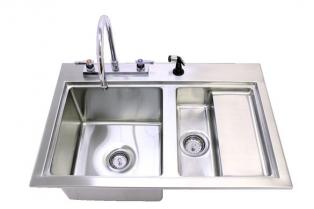Ritch Batterton here from TriStar Vet. I wanted to post this important information about our Veterinary Fecal Sink because some veterinary professionals haven’t heard about our stainless steel sink designed specifically for the safe handling of fecal/lab samples.
TriStar Vet created this sink after visiting a number of veterinary practices and seeing the way they managed fecals and other lab procedures. We witnessed a common frustration about handling fecal matter and possibly contaminating work areas — putting the staff at risk.
We went back to our engineering team and came up with a solution that eliminates or greatly minimizes that risk for veterinary teams.
Discover how our exclusive stainless steel veterinary fecal sink can help you eliminate contamination in your practice.

As far as we know, we’re the only manufacturer in the veterinary industry to develop what is called a fecal sink or lab sink.
And why did we create such a specific-duty sink?
Because we wanted to give you and your team a place to work without contaminating your countertops.
With this fecal sink, you can perform your tests and simply wash down samples without having to lay them on the counter.
Imagine this scenario using our veterinary fecal sink:
- When you’re ready to run a fecal test, you prepare the sample on our unique, stainless steel drain board/work surface built in within the sink. (This drain board/work area is shown on the right in our photo.)
- Still working on the drain board/work area, you place a portion of the fecal sample and reagent on a slide to run the test.
- Then, you just wash everything else down the drain.
With this special sink, there’s never a need to place sample materials on the counter. You simply perform the entire procedure within the drain board — eliminating the chance of contaminating your countertops.
This fecal sink is one of our most popular items.
When veterinarians find out we have one and how it works, they typically order it right away and bring it into the practice, replacing the standard sink in the lab. What about you?
Questions? Comments? Please add a comment below. Thank you.

